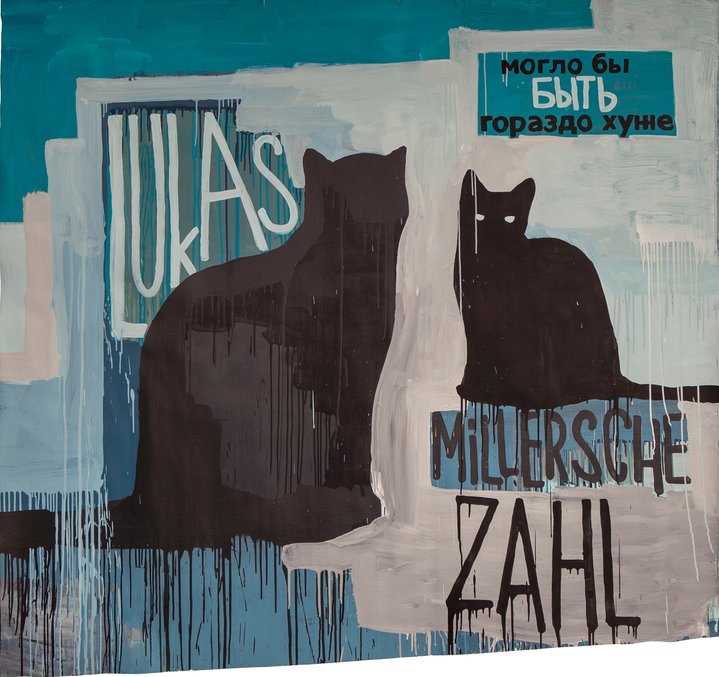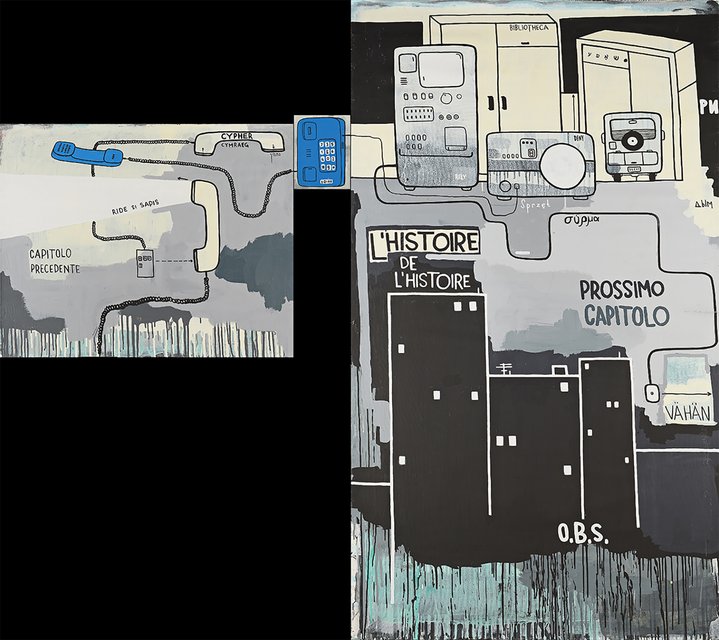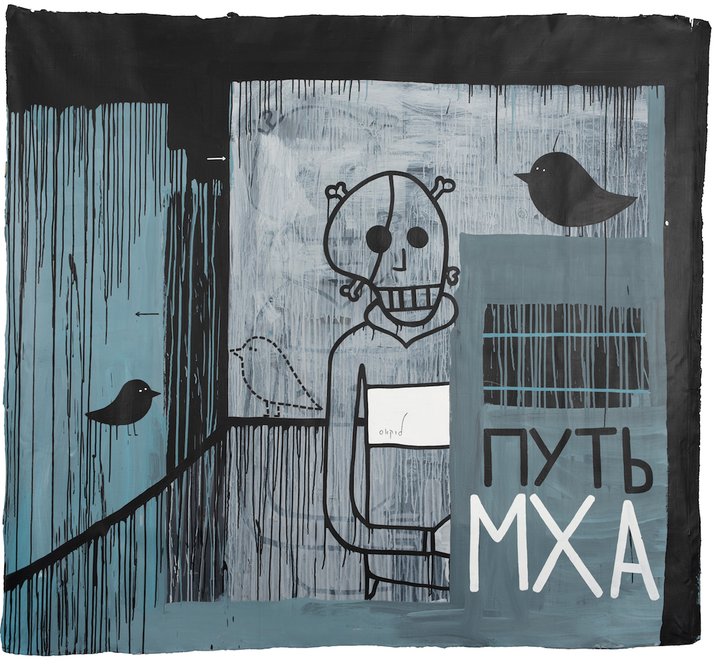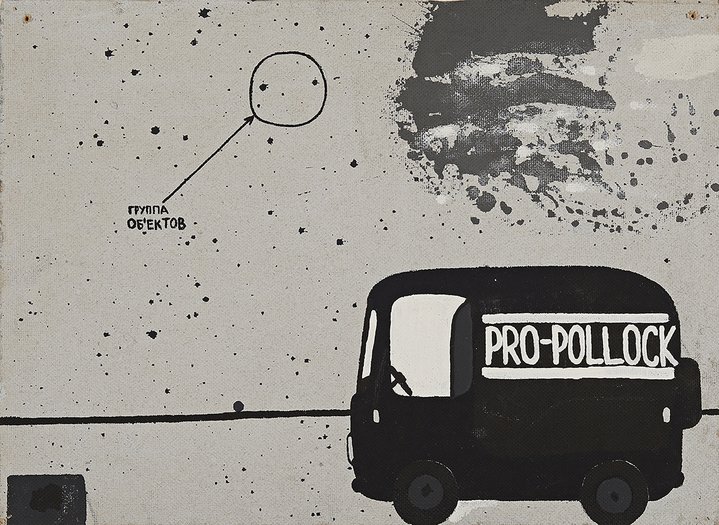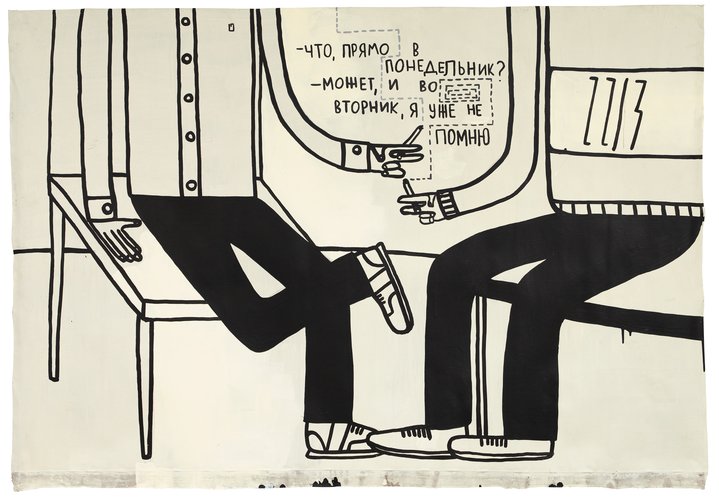Valery Chtak: A self-contradicting philosopher

An exhibition of the Russian artist who adores paradoxes and puzzling multilingual wordplay has opened in Moscow amid a coronavirus-related lockdown. Or has it not?
Apolitical, with Udmurt and Polish roots, Valery Chtak (b. 1981) loves paradoxes and the phrase “In mistakes there is always hope”. Probably, the most surprising paradox concerning his art is that he is a graffiti artist who has never exercised his art on the street. His path as an artist started in 1998 at the age of 16, when he helped a group of Moscow Actionists to build barricades made of cardboard boxes and paintings near the Kremlin to protest against the lack of support from the government – Chtak was himself the one who placed the first box. At the end of the 1990s and in the first years of the 21st century, he was a very active member of the ‘Radek Community’. This was a collective of artists and musicians, whose works, mostly in the form of performances, are probably some of the strongest artistic reflections of the uneasy period that saw Yeltsin’s shock therapy giving way to Putin’s stabilization. In those early years, Chtak focused his energies on his solo career and perfecting his personal style, made of monochromatic drawings about the everyday life of common people. Black, white and grey appear to be the dominant colours in his gamma – often accompanied by sentences in several languages – with an evident predilection for Russian, German and Italian – and sometimes mixing words from two or more languages. His formula – “L’art c’est Kunst” – should be taken as his motto.
Surprisingly enough, he is not an artist who works in sequences. As a matter of fact, his almost comic works are always one-drawing stories. As far artistic influences are concerned, Chtak turns out to be a big fan of Monty Python, to which he owes the deadpan humour of some of his works, as well as Joseph Beuys, which he calls his idol. Basquiat is also a favorite and, as for Russian contemporary art, he is a great admirer of Andrei Monastyrski, one of the strongest representatives of the Moscow (Romantic) Conceptualism, which explains the hermeticism of some of his other works.
Chtak’s latest project, currently on show at Moscow’s Multimedia Art Museum, bears the unsettling title ‘It Could Be Much Worse’. Prophetically, the exhibition opened without an opening, since the museum is closed to the public at the moment, as all museums are in Moscow. However, it will be possible to preview it online on the museum website until the doors will reopen in mid-January. Beside the canonic comic style graffiti and single stories, the exhibition surprises with two abstract canvases without words or geometrical patterns in them. This adds complexity to the game of interpretation with the other works. As usual, objects, people, animals – cats are unquestionably Chtak’s favorite subjects – are juxtaposed with sentences that have nothing spectacular or pompous in them. Life as it is.
The key to understand Chtak’s world has to be found in the artist’s assertion that his art is closer to philosophy than anything else. Without any doubts, this might actually be true. After all, he once candidly admitted: “I contradict myself every five minutes.”






